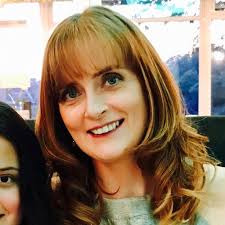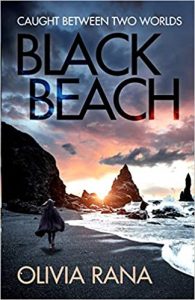Place In A Book – Do You Need To Go There?
 Place in a book – do you need to go there?
Place in a book – do you need to go there?
Some years ago I went to a talk by the award-winning Irish writer Colm Tóibín. It was after the launch of his much acclaimed novel, Brooklyn, and I remember him telling the audience that when he wrote Brooklyn he had never been to the city himself. For his research he had relied on maps, read books and talked to people who lived there. I found this startling, as I’d recently read the book myself and the sense of place was profoundly believable and authentic. It went against that old adage ‘write what you know’ and made me rethink my ideas on how to write a book, on developing the setting for a story.
As it happens I was working on my first novel at the time. Elastic Girl is an emotional story about a young girl called Muthu who is sold into the Indian circus. The idea had come to me after hearing about this horrific problem on the radio, and it was a story that I felt compelled to write.
However, I wasn’t sure if I was best placed to write it. I wasn’t from India, I knew little or nothing of children being sold into the circus, and I had only been to India a couple of times, and not extensively to the locations where I had intended to take my main character. But, after Colm Tóibín’s talk I felt bolstered. I began to look at all the ways I could make my setting as evocative and believable as he did.
My in-laws are from India, so I did have some understanding of India’s culture, and when I had travelled to India I had kept detailed diaries that were full of information on places, sounds and smells that served to remind me of what it was like. I began to do extensive research on locations in India, the layout of cities, the food, the traditions, and then of course on the subject of children being sold into the circus.
I connected with a charity who helped to rescue children from circuses in India and I absorbed the photographic work of Mary Ellen Mark, an American photographer who spent a lot of time in the circuses in India, capturing images of child performers and acrobats. It’s amazing how much you can learn from an image, how it evokes such visceral emotions, and some of her photography was fundamental in helping to form my central characters.
It would have been easy to say that the story of Elastic Girl and Muthu was beyond my reach, but I looked at the tools and information I already had and discovered that I was capable of bringing this story to life. My belief in the character of Muthu and my determination to tell her story was enough to drive me on, and in the end my book made its way out into the world, and one of the most common pieces of feedback has been in praise of the sense of place in Elastic Girl.
“As outsiders looking in, we see the physical landscape, colours and experience the odors of India and the heartbeat of Indian culture through her (Muthu’s) eyes. You listen to the throb and vibrations of living households and the circus in this case. The reader moves with the moods, noises and visions as if experiencing it first hand.” (Amazon review)
The approach to my second book was different, because I did travel to the setting of my story for research purposes. Black Beach is set in Iceland and I had initially come upon the idea for my book following a conversation with one of my close friends, who is from Iceland. She intrigued me with stories of the Hidden People in Iceland, known as Huldufólk.
These creatures are believed to live inside the rocks in Iceland and there are still many superstitions surrounding their existence. It reminded me of the stories I grew up with in rural Ireland around the existence of fairies, and perhaps that’s why it sparked my interest, this common cultural belief. In contrast to my first book, I had never been to Iceland, but it was definitely on my list of places I wanted to visit.
I was very fortunate to receive an award from the Arts Council in Northern Ireland, and I used that money to go to Iceland to do research. My friend came with me and she was able to help me make contact with some people who were instrumental to my writing of Black Beach. I spent time with the renowned psychic and friend of the Huldufólk, Ragnhildur Jónsdóttir. She was a great source of help in informing my central character, a girl called Fríða who also has the gift of seeing. Ragnihildur continued to help with my many questions in the years after I’d been to Iceland, and was one of the first people to read a draft of my book.
While in Iceland I also travelled to the main setting of the story, a village called Vík in the southern-most part of Iceland. This is where Black Beach is located. There I walked the beach, trekked up to the church on the hill and spent time exploring the houses and shops, all in an effort to capture a sense of this place. I also met with locals who had grown up in Vik and asked them everything I needed to know about what it was like back in the 1950’s, as this is where my story begins.
I took my findings home with me, I studied photographs, and continued to probe and search for information that would help me. It was important that I conveyed a true essence of Iceland and its people, both in the past and now, and that I explored the notion of the Huldufólk in a way that would intrigue readers, just as it had captured my imagination.
My current work in progress, titled The Coppal Bawn is set closer to home, in the place where I grew up. It may seem on the surface like the easier option, writing about somewhere so familiar, but I’ve found it strangely difficult. Writing about what is closest to you feels more personal; here I’m not an observer or a tourist, I’m writing much from personal experience and understanding.
The story is set against a period of turbulent history in Northern Ireland, and it has also been difficult to step back into that period. I have to ensure that whilst I want to enable the reader to see what was going on at the time, and to have some understanding of how that shaped people, that the political conflict doesn’t take over the story itself. I’m travelling into a different destination with this book; deeper into my own emotional experiences, into the makeup of the people and the place I grew up in.
It feels as though there is more at stake, that I can’t get it wrong. But, I’m letting my characters drive the story, allowing them to take it to where it needs to go, shutting out the internal voice that tells me ‘you can’t say that’ simply because it feels slightly autobiographical. It’s not my story after all.
In the writing of my books I have travelled by plane, I’ve trekked through research and diaries and uncovered snippets of information that have formed key ideas. I have journeyed with others through their life stories, and dug deep into the heart of my own emotional experiences. Getting on a plane and going somewhere will not alone tell a story.
The novel Brooklyn was set in the 1950’s, a landscape much different to the present day, and incapable of time-travel, Tóibín made me realize that in writing you are voyaging with the senses, the mind, the heart. Those are the most important destinations you need to reach in order for a place to feel real.
—
Elastic Girl and Black Beach are available now on Amazon
Black Beach is available now on Amazon.
—
Olivia Rana has a Masters of Art in Creative Writing from Queen’s University, Belfast. Her debut novel, Elastic Girl was published in November 2017 and was awarded fiction winner in the prestigious 2019 Indie Reader Discovery Awards.
Rana’s second novel Black Beach is set in Iceland and explores the phenomena of the Huldufólk, or Hidden People, through the eyes of a psychic named Fríða Jónsdóttir. Fríða has been a friend of the Huldufólk all her life, living between two worlds. Now at age seventy-five she is given her greatest challenge ever, to save the lives of the Huldufólk on Black Beach, but she must overcome her own frailties and the disbelief of those around her in order to do so. In an extraordinary turn of events, it is her daughter Alda who comes to her help, proving the strength and tenacity of the mother/daughter relationship.
Both Elastic Girl and Rana’s second novel, Black Beach received an award through the Arts Council for Northern Ireland under their Support for Individual Artists Programme.
Olivia Rana lives in Belfast with her husband and two young children. She is currently working on her third novel.
–Follow Olivia on Twitter https://twitter.com/Oliviarana2
BLACK BEACH
 Alda, a logically minded seismologist has always been sceptical of her mother Fríða’s belief in the strange Icelandic phenomena known as Huldufólk (Hidden People). But when the aging Fríða mysteriously disappears from her nursing home and sets off across country to save the Huldufólk from a threat to their homes, it is the start of an extraordinary journey for both women.
Alda, a logically minded seismologist has always been sceptical of her mother Fríða’s belief in the strange Icelandic phenomena known as Huldufólk (Hidden People). But when the aging Fríða mysteriously disappears from her nursing home and sets off across country to save the Huldufólk from a threat to their homes, it is the start of an extraordinary journey for both women.
Alda confronts her own demons and Fríða finally helps to uncover the truth of the mysterious events that led up to the death of her father six decades earlier. Through their journeys, and an imminent disaster on Black Beach, the two women come together with a more profound understanding of each other and themselves, proving the resilience and tenacity of the mother/daughter relationship against all odds.
Black Beach was informed in part by renowned Huldufólk seer and environmentalist Ragnhildur Jónsdóttir. Ragnhildur has given her full endorsement of the book – “This is the first time ever I have read a story about connection between the worlds, so real, so alive and so true. I love how it brings together the world of the “know it all” and the world of those who are always questioned, not believed and ridiculed. What a treat to read this story.” Ragnhildur is the subject of current award winning realist documentary The Seer and the Unseen, directed by Sara Dosa.
Category: Contemporary Women Writers, How To and Tips






























